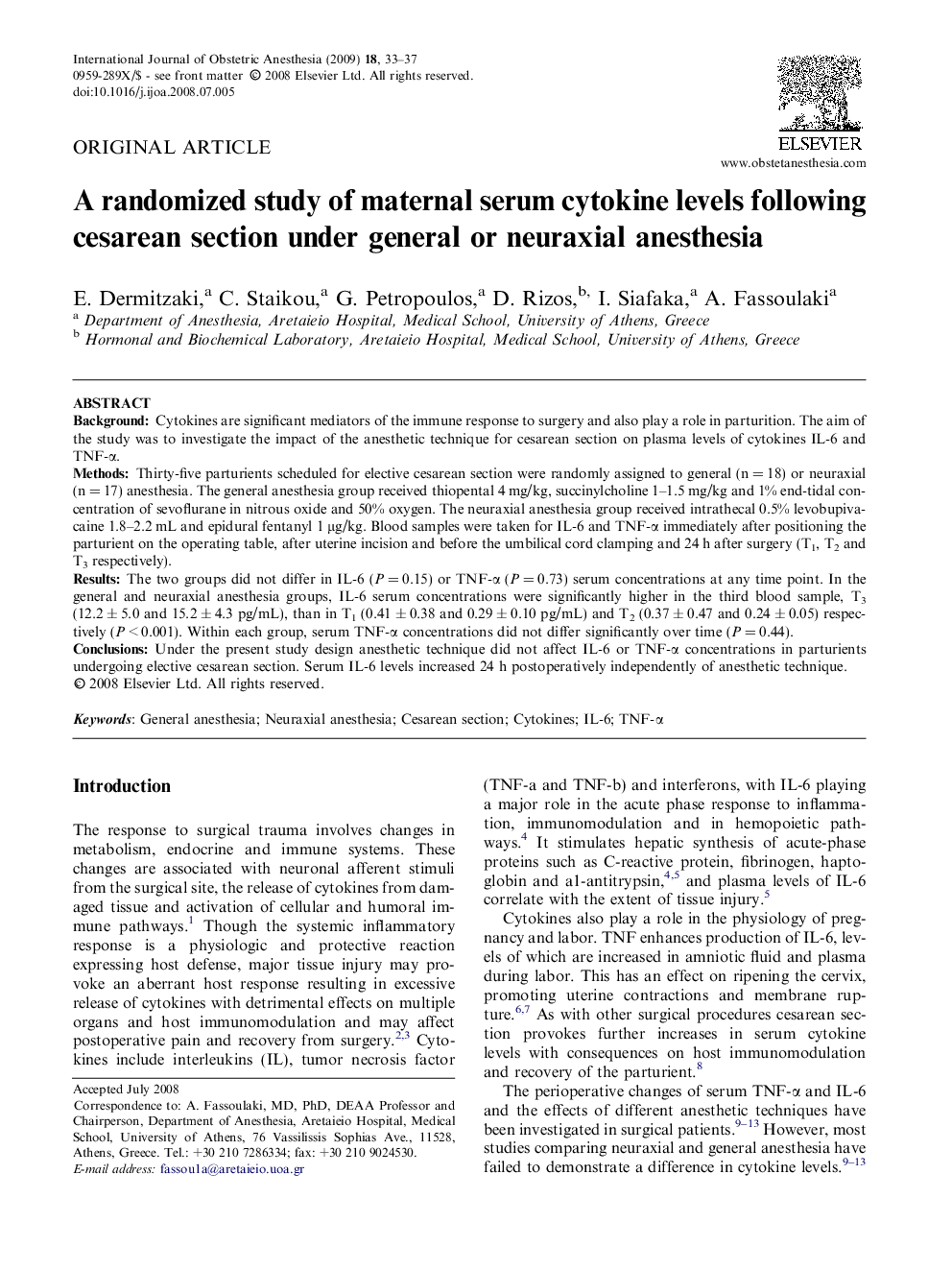| Article ID | Journal | Published Year | Pages | File Type |
|---|---|---|---|---|
| 2758625 | International Journal of Obstetric Anesthesia | 2009 | 5 Pages |
ABSTRACTBackgroundCytokines are significant mediators of the immune response to surgery and also play a role in parturition. The aim of the study was to investigate the impact of the anesthetic technique for cesarean section on plasma levels of cytokines IL-6 and TNF-α.MethodsThirty-five parturients scheduled for elective cesarean section were randomly assigned to general (n = 18) or neuraxial (n = 17) anesthesia. The general anesthesia group received thiopental 4 mg/kg, succinylcholine 1–1.5 mg/kg and 1% end-tidal concentration of sevoflurane in nitrous oxide and 50% oxygen. The neuraxial anesthesia group received intrathecal 0.5% levobupivacaine 1.8–2.2 mL and epidural fentanyl 1 μg/kg. Blood samples were taken for IL-6 and TNF-α immediately after positioning the parturient on the operating table, after uterine incision and before the umbilical cord clamping and 24 h after surgery (T1, T2 and T3 respectively).ResultsThe two groups did not differ in IL-6 (P = 0.15) or TNF-α (P = 0.73) serum concentrations at any time point. In the general and neuraxial anesthesia groups, IL-6 serum concentrations were significantly higher in the third blood sample, T3 (12.2 ± 5.0 and 15.2 ± 4.3 pg/mL), than in T1 (0.41 ± 0.38 and 0.29 ± 0.10 pg/mL) and T2 (0.37 ± 0.47 and 0.24 ± 0.05) respectively (P < 0.001). Within each group, serum TNF-α concentrations did not differ significantly over time (P = 0.44).ConclusionsUnder the present study design anesthetic technique did not affect IL-6 or TNF-α concentrations in parturients undergoing elective cesarean section. Serum IL-6 levels increased 24 h postoperatively independently of anesthetic technique.
